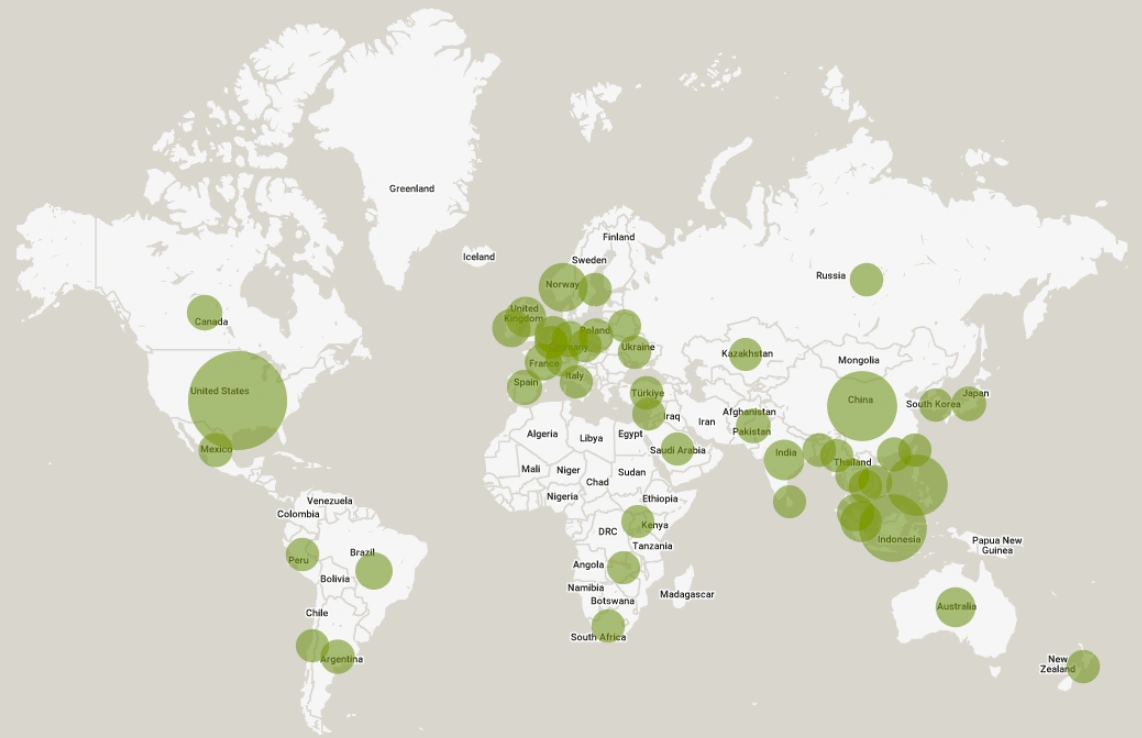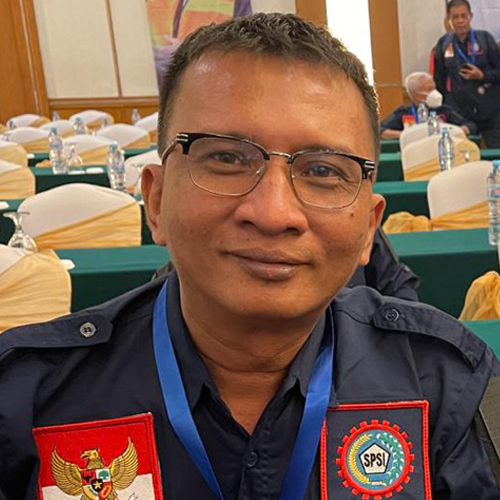GNA Grassroots Report Guidelines
Dear Green Network Asia members, communities, readers, and literally everyone!
We would like to invite you to write and publish what you see, experience, and learn directly from the fields at the grassroots level on Green Network Asia’s “Grassroots” platform.
Your grassroots report submission may include, but is not limited to, documenting, analyzing, reflecting, and communicating observations, facts, and lived experiences to amplify their authentic voices. You may highlight concerns and hopes as well as lessons learned and good practices from the grassroots.
Mission
The roles of the grassroots for the realization of sustainable development around the world are instrumental yet often go unnoticed by wider audiences and the general public due to limited resources for publications.
At Green Network Asia, we work day-to-day to empower people and communities in societies through digital publications produced and disseminated by our team. However, we are deeply aware that our limited time, energy, and resources are far from the potential of capturing dynamics and stories in different corners of the world, including the complexity of unique events, voices, lived experiences, efforts, insights, and wisdom from within societies.
That’s why we launched this “Grassroots” platform to facilitate you in publishing field reports and stories from the grassroots within the lens of sustainability-related issues and sustainable development, mainly on perspectives that serve the needs of the grassroots and public interest.
Benefits
By publishing your field reports and stories from the grassroots in Green Network Asia’s “Grassroots” platform, you can help amplify authentic voices of the voiceless and unique stories from the fields organically. You will also benefit from our editorial support such as curation, editing, publication, and dissemination; and reach our multi-stakeholder communities who have passion, enthusiasm, aspiration, influence, and interest in sustainable development, as well as global audiences.
We do not provide an honorarium for organically earned publications on Green Network Asia’s “Grassroots” platform.


As of 31 December 2024, Green Network Asia's digital publications have gained over 1 million readers globally.

Feedback from the Authors
Learn how our editorial support can create value to your work that will strengthen your portfolio, directly from the feedback we received from the authors:

Pisith Hun
Lecturer, Paragon International University, Cambodia
“My article, “Amending Phnom Penh’s Green Spaces: Should we go small with pocket parks?” was my first op-ed published outside of Cambodia. After its publication, I was interviewed about my insights on Phnom Penh’s green spaces and spoke at various events on similar topics. Overall, I had a great experience with GNA. Their op-ed guidelines are very clear, and the editing process enhances the clarity and impact of the writing. Thanks to the reviewers who made my article more polished and informative! I find GNA to be an impactful digital media and believe it will continue to be a global platform in the future.”

Alexandria Virginski
Associate, Law firm, United States
I find the editing, curation, and publication process very responsive and useful. They were very easy to work with and had great, meaningful feedback. I would recommend GNA to others who are looking at getting published.

Royanto Purba
Chairman, Federasi Serikat Pekerja Kerah Biru (Federation of Blue Collar Workers Union)
“The curation and editing process by Green Network Asia’s editorial team has made my “Opinion” article more direct and easy to understand. I am very happy with the publication of my article by Green Network Asia, and I always share it with others. The positive outcome I experienced directly from publishing my op-ed with Green Network Asia was that I became a speaker for ILO event to talk about Just Energy Transition in Samarinda on 05th September 2023.”

Emmanuel Ariananto Waluyo Adi
Legal Analyst, Ministry of State Secretariat of the Republic of Indonesia
“The curation and editing by Green Network Asia’s editorial team on my opinion article was very detailed and interactive. I felt confident because the article had gone through a credible process before publication. The benefit I get from Green Network Asia is that my article can also become a reference for others’ writings.”
Topics of Interest
To be relevant to Green Network Asia’s target audiences, your field reports and stories from the grassroots should cover any of the following topics:
Poverty Eradication | Rural Development | Food Security | Nutrition | Sustainable Agriculture | Herbs and Spices | Health and Well-Being | Health and Population | Education | Culture | Gender Equality and Women’s Empowerment | Diversity, Equity, and Inclusion | Water and Sanitation | Energy Transition| Green Economy | Sustainable Tourism | Employment and Decent Work for All | Social Protection | Industry | Sustainable Transport | Reduced Inequalities | Youth | Children | Peoples with Disabilities | Indigenous Peoples Disaster Risk Reduction | Sustainable Cities and Human Settlements | Sustainable Consumption and Production | Sustainable Value Chain | Chemicals and Waste | Climate Change | Atmosphere | Small Island Developing States | Oceans and Seas | Biodiversity and Ecosystems | Forest | Mountain | Desertification, Land Degradation, and Drought | Integrated Decision Making and Participation | Institutional Framework and International Cooperation for Sustainable Development | Capacity Development | Sustainable Finance | Financial Inclusion | Blended Finance | Multi-stakeholder Partnership and Voluntary Commitments | Science | Technology | Trade | Impact Investing | Corporate Responsibility | Corporate Sustainability | Environmental, Social, and Governance (ESG) | Corporate Accountability
Submission Format
Technical Guidelines
- Your grassroots report submission must be original, not a result of plagiarism, not AI-generated, and has not been previously published.
- You must ensure to DO NO HARM and that you have obtained free, prior, informed consent from the communities you report on.
- You should write your field reports and stories from the grassroots in an easy-to-read and popular writing style while maintaining the quality of the content. Avoid clickbait, sensationalism, greenwashing, and socialwashing.
- You should hyperlink all data/sources/references available online into your article draft to ensure credibility and allow our audiences to learn further. Only legitimate sources are accepted.
- We highly recommend you use subheadings to highlight important points in your grassroots reports and help our community readers navigate your content more quickly and easily.
- Your article submission should be within 500-700 words, including the title and subheadings.
- You may include up to three high-resolution images to strengthen the messaging of your field reports and grassroots stories, from which one Featured Image will be chosen by our team. The images should be original photos taken from the fields. You must also include the sources, captions, and alt-text for all images that you use.
- You can also submit your grassroots reports in short-form videos, with a maximum duration of 2 minutes, using the 9:16 aspect ratio in portrait orientation. You can create an explainer video or advocacy video to support public causes that you care about.
- You can also submit your grassroots reports in the form of photo stories (Instagram carousel) in portrait mode, with a resolution of 1080×1350 and an aspect ratio of 4:5.
- You should include alt-text for all visual elements and closed captioning for all audio elements in your submission. We strive to make our education and advocacy efforts accessible to as many people as possible.
Editorial Decision
We do our best to read your submissions and notify you about our editorial decision as soon as possible within one week. If we don’t get back to you within one week, you may assume that we will not publish your content.
Curation and Editing
We do careful final editing on the grassroots report submission that we have approved to be published. We ask the author to approve all changes before publishing the final version on the web.
Submission
In the body of the email, please include:
- A short profile (name, job title, organization, academic background, industry, sector, expertise, interest, experience, etc, a maximum of 50 words) and a photo of the author.
- Statement of originality. Integrity, credibility, and originality are critical to our editorial standards. You must declare that your submitted work is original, not a result of plagiarism, has not been previously published, and is not AI-generated. We also ask that you disclose whether and how you've used any AI tools in the making of your grassroots report.
- Statement of ethics and accuracy. You must declare that all information is true, accurate, and complete at the time of your report and to the best of your knowledge; and that you have obtained free, prior, and informed consent from the communities you report on.
We look forward to learning, sharing, networking, and collaborating with you to create positive impact for people and the planet through our public education and multi-stakeholder advocacy efforts.
Thank you for your participation!
Last updated: 08 October 2025

